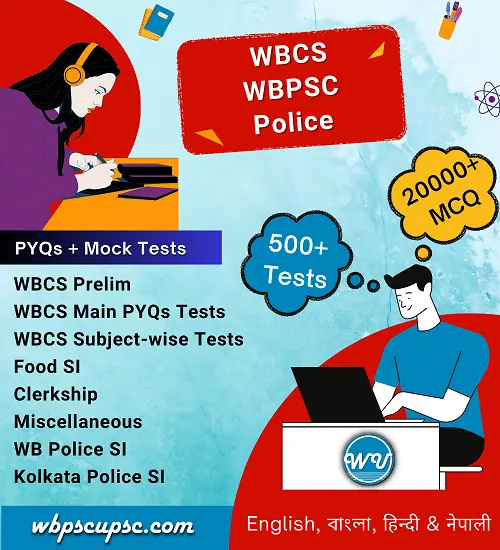March 13, 2019
Advent of Europeans – East India Company
Contents
East India Company
Portuguese in India
- Prince Henry of Portugal encouraged voyages for discovery of sea route to India.
- 1st Portuguese reaching the Cape of Good Hope was Bartholomew Diaz in 1487.
- Vasco da Gama reached the port of Calicut on May 21, 1498.
- He stayed in India for 3 months.
- He was warmly received by Zamorin, the Hindu ruler of Calicut.
- 1st Portuguese trading stations at Calicut 1500.
- Vasco da Gama set up trading center at Cannanore.
- 1st Portuguese fort at Cochin 1503.
>>>>>>
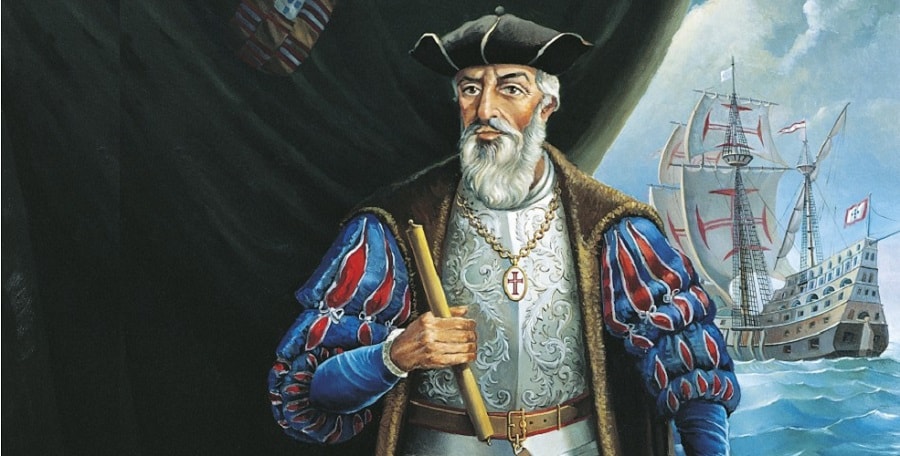
>>>>>>
Francis de Almeida
- Francis de Almeida was the 1st governor of the Portuguese in India.
- He started Blue Water Policy.
- 1505, St. Angelo Fort built in Cochin, Kerala.
- Defeat of the combined fleet of Gujarat, Egypt and Zamorin by the Portuguese.
Alfonso-da-Albuquerque (1510-15)
- He captured Goa from the ruler of Bijapur.
- Goa became capital of Portuguese settlements in India.
- He captured Malacca and Ceylon.
- Alfonso-da-Albuquerque built a fort at Calicut.
- He abolished sati in his area.
Nino-da-Cunha
- He acquired Diu and Bassein from Bahadur Shah of Gujarat.
- Portuguese settlements established at Daman, Salsette and Bombay on the west coast.
- San Thome near Madras, Nagapatnam in AP and Hugli in Bengal on the east coast.
>>>>>>
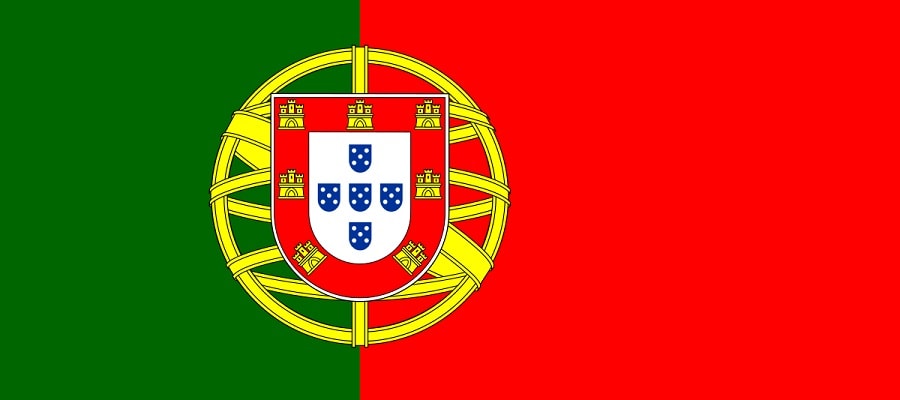
>>>>>>
Portuguese Gifts to India
- Cultivation of Tobacco, Cashew, Maize and Potato.
- 1st Printing press in India (1556 ).
- 1st scientific work on Indian medicinal plants.
Decline of Portuguese in India
- 1631, Portuguese lost Hugli to Shahjahan.
- 1661 Portuguese king gave Bombay as a gift to Charles II of England for marrying his sister.
- 1683, after two naval assaults, the Marathas invaded Goa.
- The Marathas captured Salsatte and Bassein in 1739.
Causes of Decline of Portuguese in India
- Religious Intolerance towards Muslims and Hindus.
- Conflict with Mughal
- 1612 English ship Dragon under Captain Best with a little ship, successfully fought a Portuguese fleet. Jahangir, who had no navy, was greatly impressed.
- In 1613, the Portuguese offended Jehangir by capturing Mughal ships, imprisoning many Muslims.
- Portuguese started a cruel slave trade by purchasing or seizing Hindu and Muslim children. They seized two slave girls of Mumtaz Mahal. Shah Jahan ordered the Bengal governor Qasim Khan to take action against the Portuguese. A siege of Hooghly finally led to the Portuguese fleeing.
- Their dishonest trade practices also evoked a strong reaction. The Portuguese earned notoriety as sea pirates.
- The discovery of Brazil diverted colonising activities of Portugal to the West.
- Goa had lost its importance as a port after the fall of the Vijayanagara empire.
>>>>>>
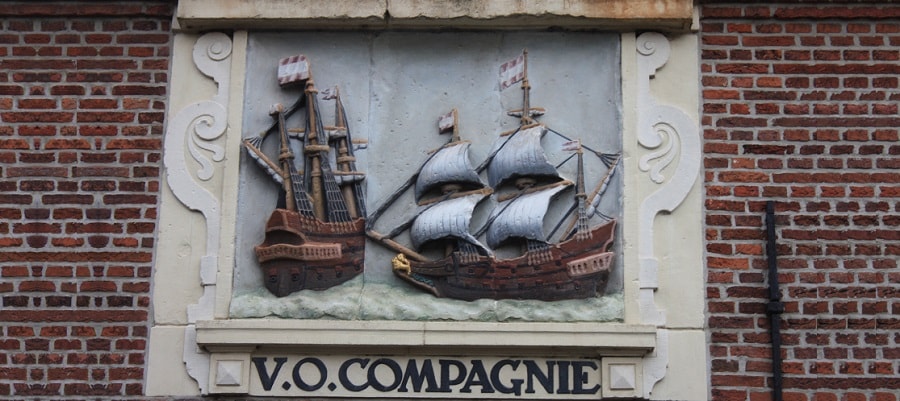
>>>>>>
Dutch East India Company
- Dutch East India Company under the name Vereenigde Oost-Indische Compagnie (VOC) was formed.
- Dutch East India Company is the 1st multinational corporation in the world in 1602.
- 1st company to issue stock bonds and shares.
- 1st factory at Masulipatnam in 1605.
- Other Dutch factories were at Pulicat, Chinsura, Kasimbazar, Patna, Balasore, Surat, Karaikal, Nagapattinam and Cochin.
- Pulicat emerged as headquarters of Dutch operations in India.
- Pulicat was later replaced by Nagapattinam near Chennai.
- Indian textiles as the premier export of India goes to Dutch East India Company after Portuguese.
Decline of the Dutch in India
- Dutch got drawn into the trade of the Malay Archipelago.
- Anglo-Dutch rivalry lasted for about seven decades.
- Final collapse of the Dutch came with their defeat by English in the Battle of Bedara or Hooghly in 1759.
- their main commercial interest lay in the Spice Islands of Indonesia from where they earned a huge profit through business.
>>>>>>>
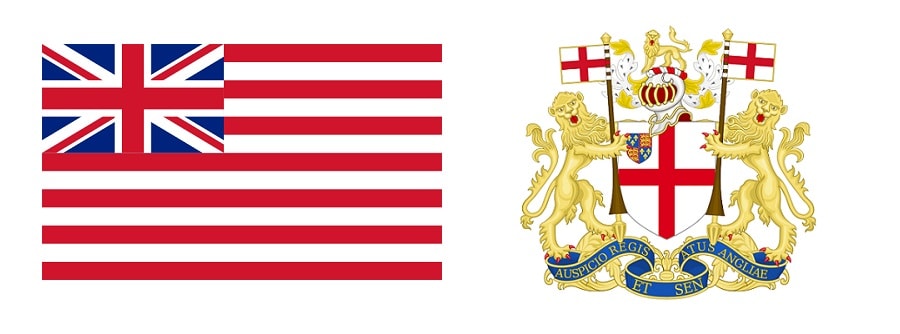
>>>>>>>
British in India – East India Company
- Francis Drake’s voyage sailed around the world in 1580.
- Britain achieved victory over the Spanish Armada in 1588.
- This 2 incident encouraged British sailors to venture out to the East.
- 1599, a group of English merchants calling themselves the ‘Merchant Adventurers’ formed a company.
- On December 31, 1600, Queen Elizabeth I issued a charter with rights of exclusive trading to the company for East.
- East India Company was established in 1600.
- Monopoly of 15 years was granted, which in May 1609 was extended indefinitely time period.
- Captain Hawkins arrived (ship – Hector) in Surat in Aug 1608.
- He came into the court of Jahangir in 1609, but failed to get permission for factory.
- In 1612, Captain Thomas Best (ship – Red Dragon) defeated Portuguese in the Battle of Swally.
- Battle of Swally happened at the coast of Suvali near Surat.
- Jahangir granted permission to English in 1612 to establish a factory at Surat.
- 1st factory of East India Company established at Surat in 1613.
- 1615, Thomas Roe came to Mughal court as ambassador of James I, King of England.
- Thomas Roe obtained permission from Jahangir to establish English trading factories in different parts of India.
- 1616, East India Company established 1st factory in the south in Masulipatnam.
- By 1619, English established their factories at Agra, Ahmedabad, Baroda and Broach.
- Thomas Roe stayed there till 1619.
- Golden Farman issued to them by the Sultan of Golconda in 1632 for trading freely in the ports of Golconda.
- 1633, 1st factory in east India at Hariharpur in the Mahanadi delta and at Balasore (in Odisha).
- 1639 received from the ruler of Chandragiri permission to build a fortified factory at Madras.
- 1644, 1st English fortress in India Fort St George (White Town) founded in Madras.
- Shah Shuja, the subahdar of Bengal in 1651, allowed the English to trade in Bengal.
- 1651, established 1st factory in Bengal at Hooghly.
- 1667, Aurangzeb gave the English a farman for trade in Bengal.
- 1698, they succeeded in getting the permission to buy the zamindari of the three villages of Sutanuti, Gobindapur and Kalikata (Kalighat).
- Fortified settlement was named Fort William in year 1700 when it also became the seat of the eastern presidency (Calcutta).
- Charles Eyre was its first president.
- 1715, John Serman (the Governor of Calcutta) and William Hamilton cured Farukkhsiyar of a disease.
- East India Company gained 3 farman in 1717 to establish offices at Bengal, Gujarat and Hyderabad.
- Those farmans were regarded Magna Carta of the East India Company.
- Now Company was permitted to issue dastaks (passes) for the transportation of goods.
- It was decreed that the coins of the East India Company Company minted at Bombay were to have currency throughout the Mughal empire.
- After the English revolution of 1688 a rival company was formed.
- The new company, however, proved a failure.
- Two companies were amalgamated in 1708
- East India company ceased operations in 1874.
>>>>>
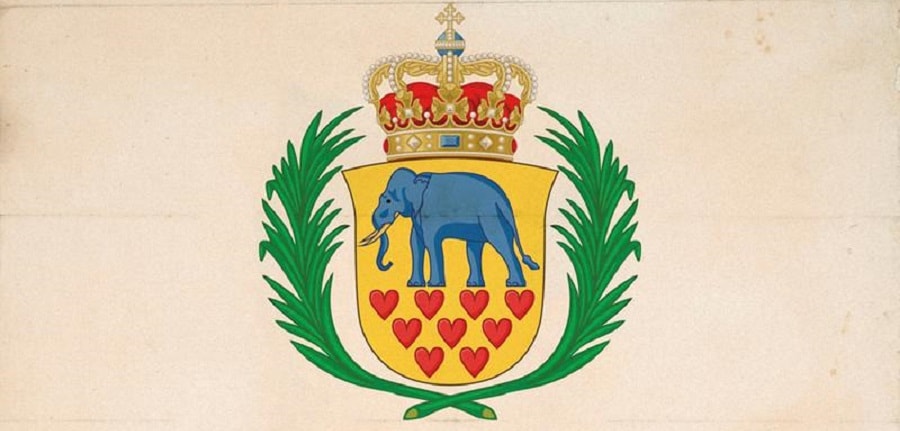
>>>>>>
Denmark – Danish in India
- Danes formed an East India Company in 1616.
- Established settlement at Tranquebar (Tamil Nadu) in 1620 and at Serampore (Bengal) in 1676.
- Serampore was their headquarters in India.
- They were forced to sell all their settlements in India to the British in 1845.
>>>>>>>
>>>>>>
French East India Company
- French East India Company formed in 1664 by Colbert, a minister under Louis XIV.
- 1668 Francis Caron established 1st French factory at Surat.
- 1669 Maracara set up a factory at Masulipatinam obtaining permission from Sultan of Golconda.
- 1673 Sher Khan Lodi governor under Bijapur Sultan, granted Francois Martin to founded Pondicherry (Fort Louis).
- Its became headquarters of the French possessions in India and he became its 1st governor too.
- 1673 they obtained permission from Shaista Khan, Mughal Subahdar of Bengal, to establish a township at Chandernagore.
- Other French factories in India were Mahe, Balasore, Qasim Bazar and Karaikal.
- Dutch captured Pondicherry in 1693.
- Treaty of Ryswick concluded in 1697 restored Pondicherry to the French
>>>>>>>
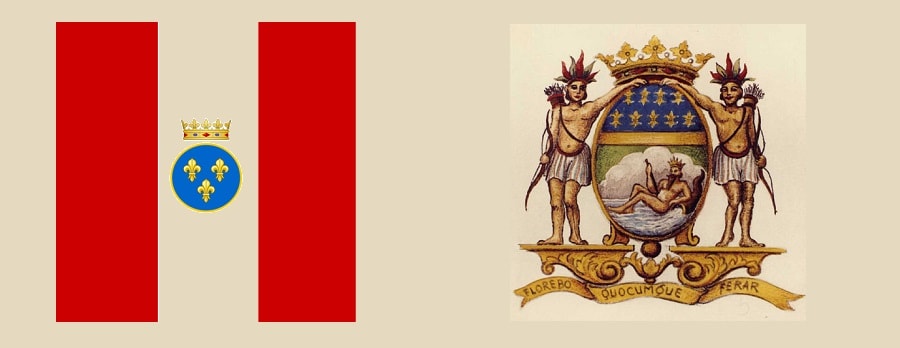
>>>>>>>
Carnatic Wars – Anglo-French Struggle
- British and the French came to India for trading purposes but both had visions of establishing political power over the region.
- Carnatic was the name given by the Europeans to the Coromandel coast.
- British and French started power strugle in India through Carnatic War.
- Carnatic War started with the outbreak of the War of the Austrian Succession.
- It ended with the conclusion of the Seven Years War.
1st Carnatic War (1742-48)
- In 1742, Carnatic War began with the outbreak of the Austrian War of Succession.
- English navy under Barnet seized some French ships in 1746.
- France seized Madras in 1746.
- English appealed for help to Nawab of Carnatic.
- Small French army defeated a huge Indian army leaded by Mehfuz Khan in Battle of Adyar in 1746.
- This was an eye-opener for the Europeans in India
- It revealed that even a small disciplined army could easily defeat a much larger Indian army.
- Carnatic War ended in 1748 by Treaty of Aix-La Chapelle.
- Madras was handed back to the English, and the French, in turn, got their territories in North America.
2nd Carnatic War (1749-54)
- Dupleix, the French governor who had successfully led the French forces in the 1st Carnatic War, sought to increase his power and French political influence in southern India.
- He stated interfering in local dynastic disputes to defeat the English.
- French supported the claims of Muzaffar Jang and Chanda Sahib in the Deccan and Carnatic respectively
- English sided with Nasir Jang and Anwar-ud-din.
- French side defeated Anwar-ud-din at Battle of Ambur 1749.
- Robert Clive and Major Lawrence won Battle of Arcot in 1751.
- French forces and Chanda Sahib were defeated at Arni and Kaveripakkam.
- French faced heavy financial losses that Dupleix’s policy involved, decided to recall him in 1754.
- Godeheu succeeded Dupleix as a governor of French East India Company.
- By the Treaty of Pondicherry, 1754 Fench possessions were given back to English.
- English emerged as winner in 2nd Carnatic war and Mohamed Ali Khan was recognized as the Nawab of the Carnatic.
Reason of Dupleix Failure in India
- Dupleix suffered from an over-sanguine temperament.
- He hoped too often for too long.
- Dupleix had autocratic behavior.
- He planned a campaign, directed his lieutenants, but never led an army in the battlefield like Lawrence or Clive.
3rd Carnatic War (1758-63)
- In Europe, when Austria wanted to recover Silesia in 1756, the Seven Years War (1756-63) started.
- 3rd Carnatic War started in India.
- 1758, the French army under Count de Lally captured the English forts of St. David and Vizianagaram.
- English led by Eyre Coote defeated French led by Count de Lally at Battle of Wandiwash in Tamilnadu in 1760
- Treaty of Peace of Paris 1763 restored to French their factories in India.
- French political influence disappeared after the 3rd Carnatic War.
- English became the supreme European power in the Indian subcontinent.
>>>>>>>>
>>>>>>>>
Causes for French Failure in India
- Commercial and naval superiority of the English.
- English East India Company was a private enterprise and French East India Company was a State concern.
- Less governmental control over English company, they could take instant decisions when needed without waiting for the approval of the government.
- French had support only in the Deccan but the English had a strong base in Bengal.
- English had three important ports – Calcutta, Bombay and Madras but French had only one Pondicherry.
- French neglected their commercial interest to territorial ambition, which made the French East India Company short of funds.
- Superiority of the commanders in the British camp like Eyre Coote, Lawrence, Robert Clive etc.
- Difference of opinion between the French Generals.
- England’s victory in the European wars decided the destiny of the French in India
>>>>>>>
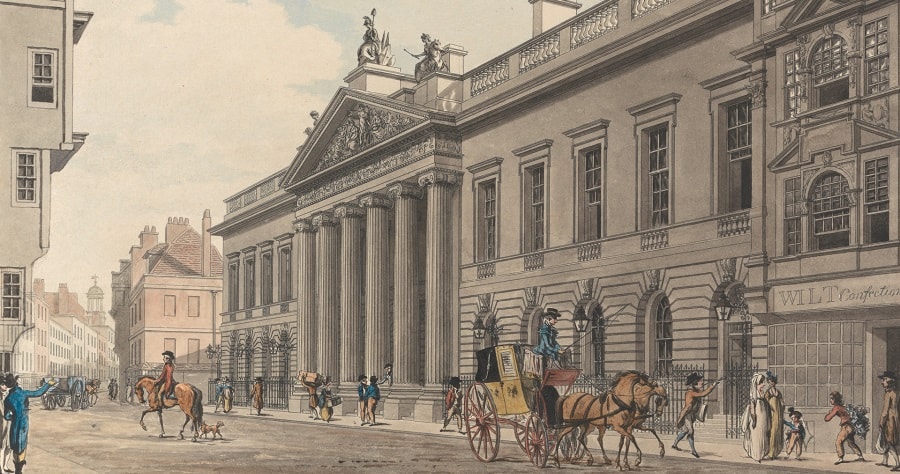
>>>>>>>
Reason of English Success
Structure and Nature of Company
- English East India Company was a private company and decision made by share holders.
- Companies of France and Portugal were largely owned by the State and their nature was in many ways feudalistic.
Naval Superiority
- Royal Navy of Britain was not only the largest; it was most advanced of its times.
Industrial Revolution
- It started in England in the early 18th century, with the invention of new machines.
- These machines greatly improved production in the fields of textile, metallurgy, steam power and agriculture.
- The industrial revolution reached other European nations late and this helped England to maintain its hegemony.
Military Skill and Discipline
- British soldiers were a disciplined lot and well trained.
- British commanders were strategists who tried new tactics in warfare and new technological developments.
Stable Government
- With the exception of the Glorious Revolution of 1688, Britain witnessed stable government with efficient monarchs.
Lesser Zeal for Religion
- Britain was less zealous about religion and less interested in spreading Christianity, as compared to Spain, Portugal or Dutch.
Use of Debt Market
- One of the major and innovative reasons of success was using debt markets to fund its wars.
- World’s 1st central bank, Bank of England (1694) was established to sell government debt to the money markets.
>>>>>>>
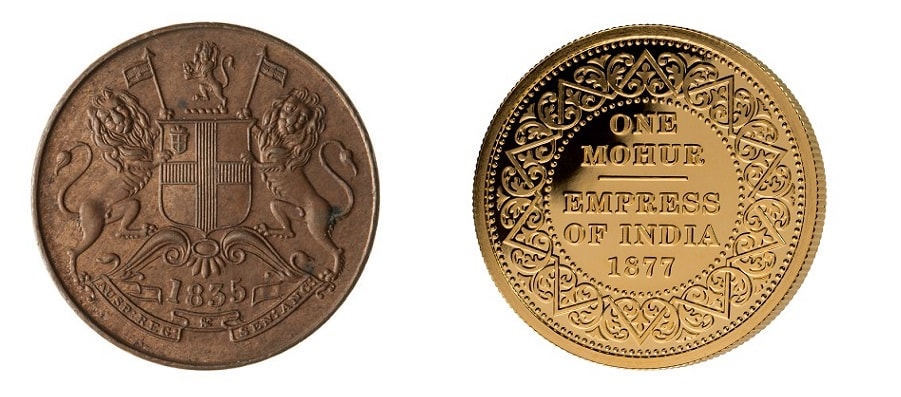
>>>>>>>
Why a Sea Route to India
- Spirit of renaissance in the 15th-century Europe.
- European economy growing rapidly, leading to prosperity and demand for luxury goods.
- Growing economy increase in the supply of meat requiring spices for preservation.
- Capture of Constantinople in 1453, and Syria and Egypt later by the Ottoman Turks calling for a new route to reach India without dealing with Arabs and Turks.
- Venice and Genoa too small to stand up to the Turks.
- Spain and Portugal aided with money and men by the North Europeans and by ships and technical knowledge by the Genoese.
Initial Export & Import India
- Great demand was there for cotton long cloth, (35 to 50 m), salempores (staple cotton cloth), and morees (superior quality cotton cloth).
- Indian cotton was popular for its lightweight, yet strong qualities.
- India was almost the only reliable Saltpeter supplier to Europe of this important component of gunpowder.
- East India Company also began to purchase opium in India and take it to China for sale.
- From the last decades of 18th century, indigo cultivation in Bengal rapidly expanded.
- Tea in India was 1st grown in Assam in 1806.
>>>>>>

